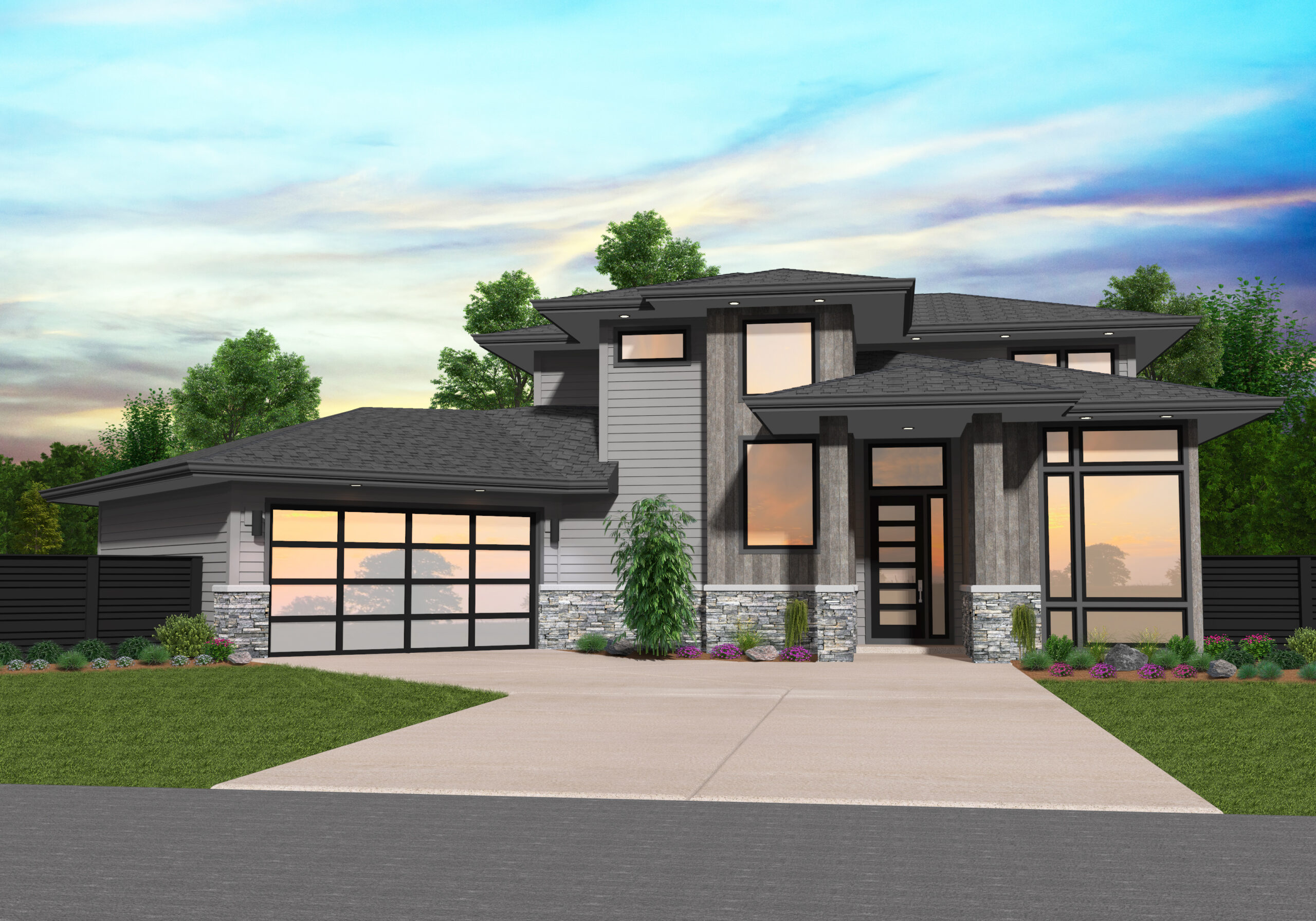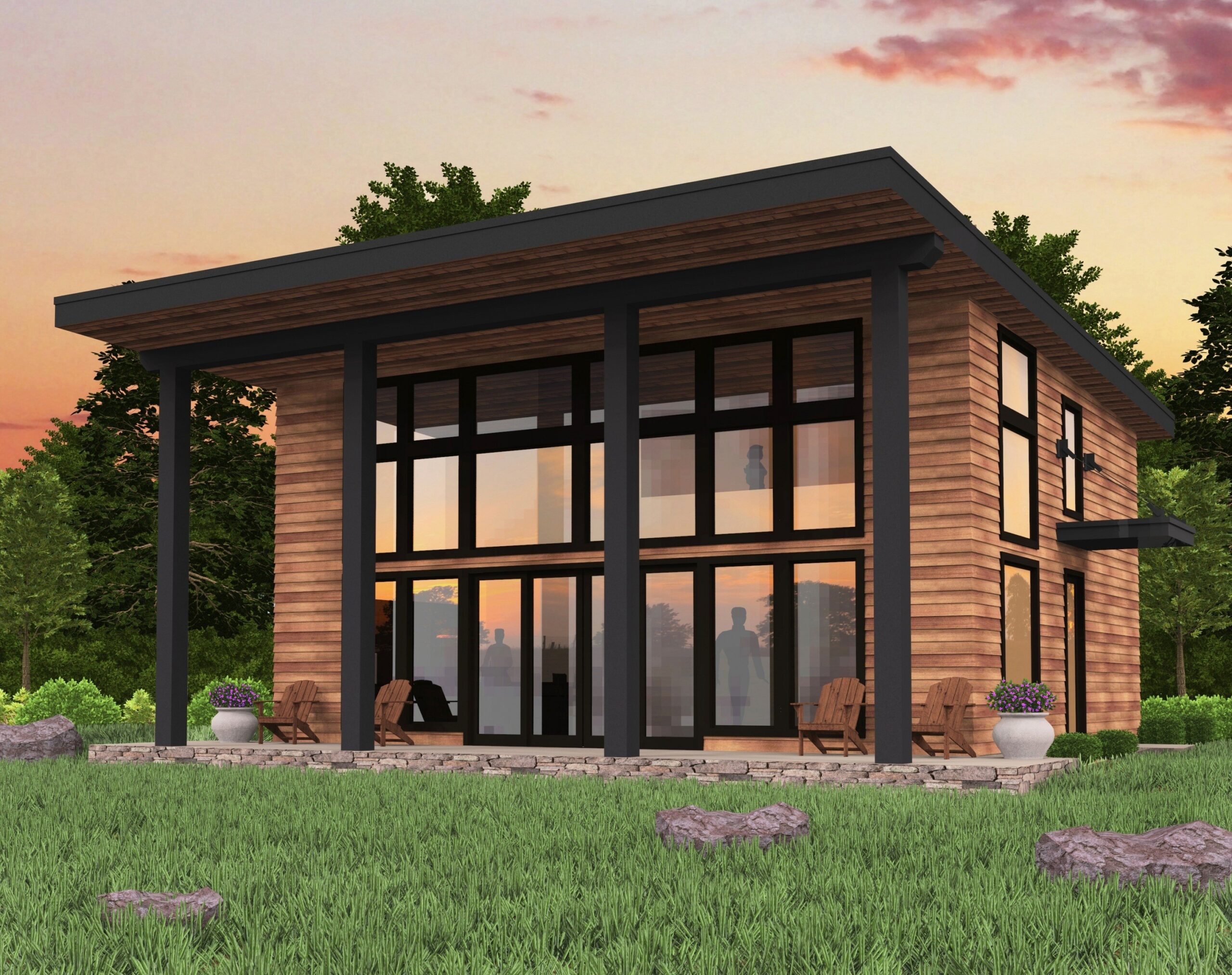Modern Design Mania
Samuel Stewart
Next time you drive through your neighborhood or into the city, take a look around. There’s a pretty good chance you’ll see at least one modern home or commercial building. In fact, all across the country, people are building more and more modern homes. In cities like Seattle, you might be hard pressed to find new construction that isn’t modern or influenced by modern architecture in some way. At Mark Stewart Home Design, we have pages and pages of all different sizes and styles of modern designs. “But, why” you might ask. There isn’t just one answer. In this post, we’re going to take a look at what makes a modern home, who is buying these homes, and why now is a better time than ever to build one of your own.
What Makes a Modern Home?
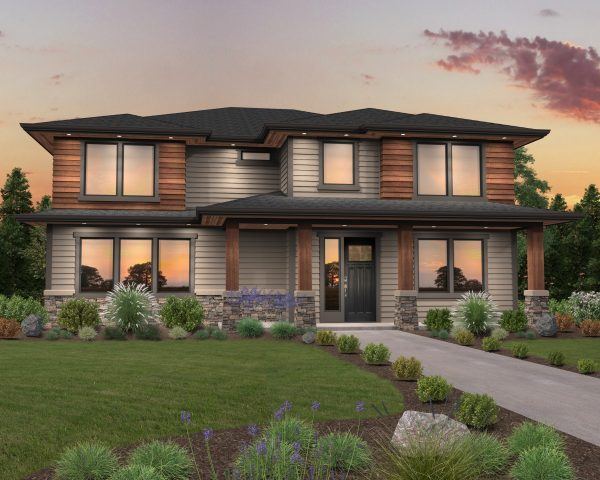
To understand where the elements of the modern style come from, it helps to look back to the beginning of the Modern movement. At the end of the 19th century, architecture was dominated by the traditional, ornate styles that had been standard for centuries. Heavy ornamentation was historically valued for both its beauty and its difficulty to produce. As our world began to industrialize, it became easier and easier to mass produce this ornamentation and this cheapened its impact. Architects began to turn to new construction techniques that were previously unavailable or not feasible until the Industrial Revolution. With plate glass, reinforced concrete, and steel becoming readily available, Modernist architects embraced the idea that the function of the structure should come first, with form following. The visual content of these new style homes came from their use of space, their shape, and their materials rather than ostentatious ornamentation. While “traditional” Modernist architecture began to transition into other contemporary styles by the 1980s, these same principles that embrace purity of form, creative use of space, and an increased focus on function still massively influence the homes of today. As with all areas of culture, styles come and go in cycles, each time being reborn having taken elements from everything that came before it.
Who is Building These Homes?
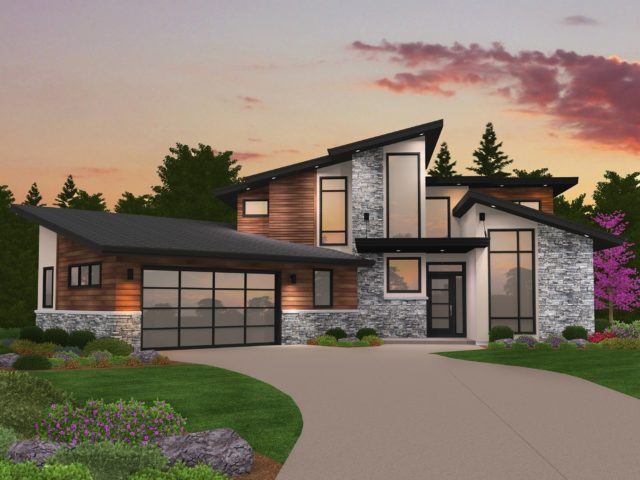
We have noticed that the most recent generation of home builders and buyers to enter the market are dissatisfied with the traditionally informed styles of the last 50 years. These are the homes their parents lived in, the places they attended school, the buildings they grew up around. Much like the Modernist architects of the late 19th/early 20th centuries pushed ahead past the historical styles gone by, these buyers are seeking something unique. They want something to call their own. Many of today’s older homes have many smaller rooms, small windows, and cramped spaces that don’t work with new homeowner’s lives and the way our society works today. People are seeking open, social, gathering spaces that sometimes just can’t be found in the more traditional style homes built within the last 50-100 years. They want bright homes with large windows and warm, inviting spaces. In many cases, it makes much more sense to build exactly the home you want rather than undergo a costly remodel potentially fraught with countless unforeseeable problems. With new construction, it is also easier to go green; the modern architects of today, more than ever before, are using natural, sustainable materials as well as energy efficient floor plans and technology to produce environmentally conscious and green homes that not only look beautiful, but also serve to protect our environment.
It is Easier Than Ever to Build a Modern Home
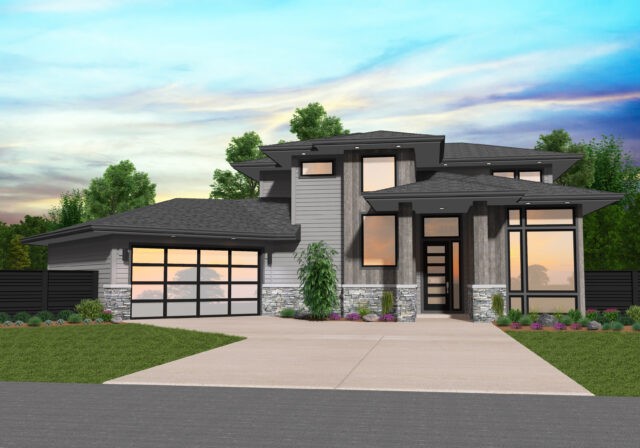
In previous decades, those looking to build their own modern house would have almost certainly needed to go the route of completely custom design. While this is an excellent option for those wanting a one of a kind home, it can be prohibitive for those on a tighter budget, those looking to develop neighborhoods, or someone who simply doesn’t want a fully custom home. Only after spending a great deal of money and receiving 50 pages of drawings would they have what they needed to build their home. Now, not only is custom design more accessible, but new home buyers and builders have access to stock house plans that couldn’t even be dreamed of 40 years ago. When customers come to Mark Stewart Home Design, they will find a myriad of modern stock house plans to choose from, with a huge range of sizes, floor plans, and features. Many times it is even possible to adapt a floor plan found in a different style of home to work with a modern exterior. Now customers can get the modern home they want without having to go fully custom.
Modern Design is Everywhere
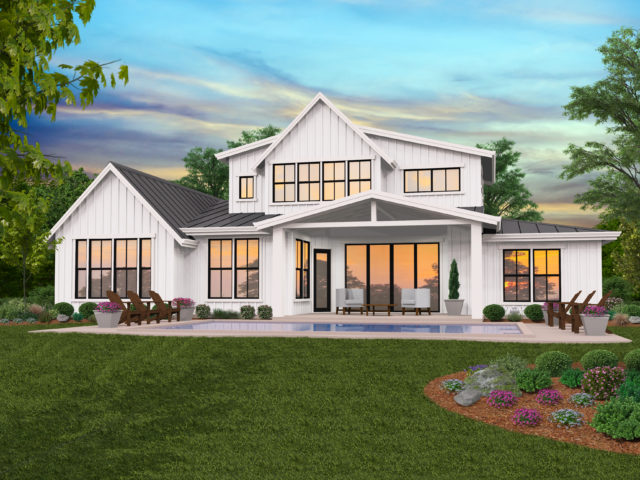
In addition to the more overtly modern homes available, many other styles of home have absorbed the principles of the modern style. Our line of farmhouses are all massively influenced by the elements of modern design. Above you’ll see the rear view of our home Pendleton, a great example of a modern farmhouse. These homes feature open spaces, large and plentiful windows, energy efficient floor plans, all while maintaining the charm of the older homes that came before. In fact, many of our other homes embrace these same principles. You’ll find kitchens with large islands, large outdoor living spaces, flexible ADUs to accommodate a variety of situations, and many more modern features throughout our whole collection. A home doesn’t have to be “modern” to be modern.
We hope we’ve been able to give you a little insight into the world of modern design as well as dispel some of the myths you may have heard. There has never been a time like now to get exactly what you want in a modern home.
